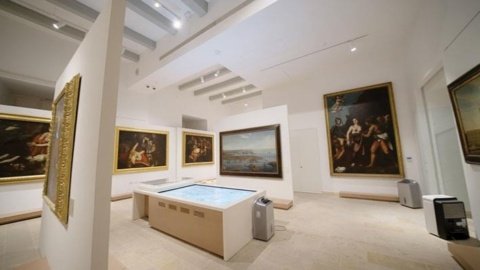They often sweep unbroken along the city’s streets, roads and avenues, their red or blond sandstone uniformity pleasing to the eye.
The city’s public buildings, including Kelvingrove Art Gallery and Museum, as well as many of the city’s libraries, were largely constructed during these periods.
These buildings are notable as much for their styles of architecture, whether baroque or classical, as for their collections. They are landmarks, tourist attractions, typically beautiful spaces.
Glasgow buildings constructed in later periods do not enjoy such universal admiration.
Often, they’re dismissed or overlooked entirely. Many of these were built in the brutalist architectural style, which developed in the UK from the mid-twentieth century and continued till around the mid-1970s.
The style featured buildings of massive form or of unusual shape, built with exposed concrete and other raw materials.
READ NEXT: ‘Glasgow is part of our story’: Scottish band releases first album in 24 years
Gone was the polished ashlar of the tenement. Instead, the exterior surface of brutalist buildings often featured rough textures. The contrast could not have been starker.
But this was the post-war world. Six years of worldwide conflict resulted in a scarcity of building materials in the UK at a time when reconstruction was a major priority.
Aerial bombardment had destroyed many buildings and left gap sites across Britain’s cities. The pressure was on to rebuild.
Examples of brutalist architecture began to appear in Glasgow’s cityscape during the 1950s and by the early 1960s, they had spread throughout the city.
Several high-rise flats, which characterised post-war rebuilding, were designed in the brutalist style.
These include the two blocks of multi-storey flats at Queen Elizabeth Square in the Gorbals (known as Hutchesontown C). They were designed by Basil Spence, a Scottish architect who was later knighted for his rebuilding of Coventry Cathedral.
Inspired by Glasgow’s shipbuilding past, Spence imagined that the washing hung out on the inset individual balconies would make the blocks look like massive sailing ships.
But the imagination of the architect could not disguise the reality of living in these poorly-built tower blocks. Once opened in 1965, residents had to contend with structural issues and associated problems like damp as well as anti-social behaviour.
The towers did not enjoy a long life and were demolished in 1993.

Rising above the busy road network of Anniesland Cross is Anniesland Court. Another brutalist tower block, this time designed by Jack Holmes and Partners, Anniesland Court is a 22-storey building based at 833-861 Crow Road.
Built between 1966-1968, it was originally Glasgow Corporation housing and is now a listed building. It is also notable as a night-time landmark, with an exterior light installation changing slowly through multiple colours as light pulses out from the building’s base to its roof.
READ NEXT: Mystery still surrounds Glasgow teenager who vanished more than 60 years ago
As Glasgow Corporation was also embarking upon an ambitious programme of school building during this period, it is not surprising that it produced examples of brutalist architecture.

For instance, the addition to Our Lady and St Francis Secondary School for Girls at 72 Charlotte Street, by Gillespie, Kidd and Coia is a distinctly brutalist building which opened in 1964.

Hillhead Library is one of the most recent examples of brutalist architecture. For years, the people of the district had campaigned for their own library.
When Hillhead Burgh Hall was demolished, it left a gap site that was earmarked for a library building. Plans were submitted in 1973 and two years later in mid-October, the newest Glasgow District Library was opened.
Queues of eager borrowers lined up on opening day to access the stock which included an extensive audio collection of tapes and records.
Quite how many admired the building itself as they waited to enter is an answer lost to time. Yet its concrete-columned façade possesses a simple beauty about it and features a large decorative balcony above the entrance.
Next year marks Hillhead Library’s 50th anniversary, a milestone for this brutalist building.
For those interested in the brutalist buildings of Glasgow, many of which are now landmarks in their own right, consider using the architectural drawings in our collections. We hold the original plans for all the buildings outlined in this article and many more besides.


